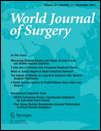Completely Removing Solitary Intraductal Papillomas Using the Mammotome System Guided by Ultrasonography Is Feasible and Safe
Abstract
Background
Because of the potential for an intraductal papilloma to progress to malignancy and the likelihood of detecting unexpected coexisting malignant disease, complete removal of the intraductal papilloma is safer than merely sampling it. The purpose of this study was to estimate the feasibility and safety of excising a solitary intraductal papilloma using the Mammotome system guided by ultrasonography (US).
Methods
We retrospectively reviewed the clinical information of 136 patients who underwent excision of solitary intraductal papillomas using the 8-gauge probe with the US-guided Mammotome system between December 2005 and December 2011 at our institution. Their lesions had been suspected preoperatively or were occasionally diagnosed postoperatively.
Results
There were no local recurrences during the follow-up period. Of the patients who showed atypia and underwent re-excision, only 2 (6.1 %) had local ductal atypia. The patients with atypia were significantly older than the patients without atypia (p < 0.05).
Conclusions
Using the US-guided 8-gauge probe Mammotome system to completely remove a solitary intraductal papilloma is feasible and safe. Close follow-up may be considered for those whose lesions exhibit atypia.




